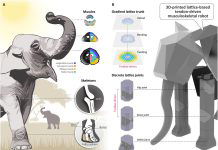
At Heriot-Watt University in Edinburgh, Scotland, a team of scientists led by Professor Mehul Malik is revolutionizing the way we think about computing and communications.
They’ve discovered a new method to program optical circuits – which are like the highways for light inside devices – paving the way for futuristic technologies like super-fast quantum computers and communication networks that are impossible to hack.
Professor Malik, an experimental physicist and a professor at Heriot-Watt’s School of Engineering and Physical Sciences, explains the significance of their work: “Light is amazing at carrying information, and using light instead of electricity for computing is seen as the next huge leap in technology.”
But there’s a challenge.
As these optical circuits, which guide light for computing, become larger and more complex, they become difficult to control and build, affecting their performance.
Professor Malik and his team have found a unique solution to this problem, using a method that takes advantage of a process that happens naturally.
Their research used commercial optical fibers – the same kind used worldwide for internet connectivity. These fibers are incredibly thin, even thinner than a human hair, and they transmit data using light.
The team discovered that by understanding and manipulating the way light scatters or spreads out inside these fibers, they could create precise optical circuits within the fibers themselves.
Published in the prestigious journal Nature Physics, their research shows a way to engineer a circuit for light inside the chaotic environment of an optical fiber. “When light enters these fibers, it scatters in complex ways.
By mastering this process and carefully shaping the incoming light, we can create precise circuits within this disorder,” says Professor Malik.
This breakthrough is crucial for the development of future quantum technologies. Quantum technologies operate at a microscopic level, dealing with individual atoms or photons (particles of light).
These include powerful quantum computers, capable of immense processing power, and quantum communications networks that are secure against hacking.
Optical circuits are essential in these technologies. In quantum communication networks, they measure information after it has traveled long distances. They’re also a key component in quantum computers, where they perform complex calculations using particles of light.
Quantum computers could revolutionize areas such as drug development, climate prediction, and space exploration. Additionally, optical circuits can process vast amounts of data rapidly, which is critical for machine learning and artificial intelligence.
“The beauty of light is its multi-dimensional nature,” Professor Malik highlights. “We can store a lot of information on a single light particle – in its spatial structure, its timing, its color. If we can compute using all these properties simultaneously, we unlock enormous processing power.”
The team also demonstrated how their programmable optical circuits could manipulate quantum entanglement, a phenomenon where quantum particles like photons remain interconnected even over long distances.
This is vital for error correction in quantum computers and for the most secure types of quantum encryption.
This groundbreaking research was a collaborative effort, involving academics from Lund University in Sweden, Sapienza University of Rome in Italy, and the University of Twente in The Netherlands, as well as Professor Malik’s team at the Beyond Binary Quantum Information Lab at Heriot-Watt University.
Their work opens up exciting possibilities for the future of computing and secure communications.



